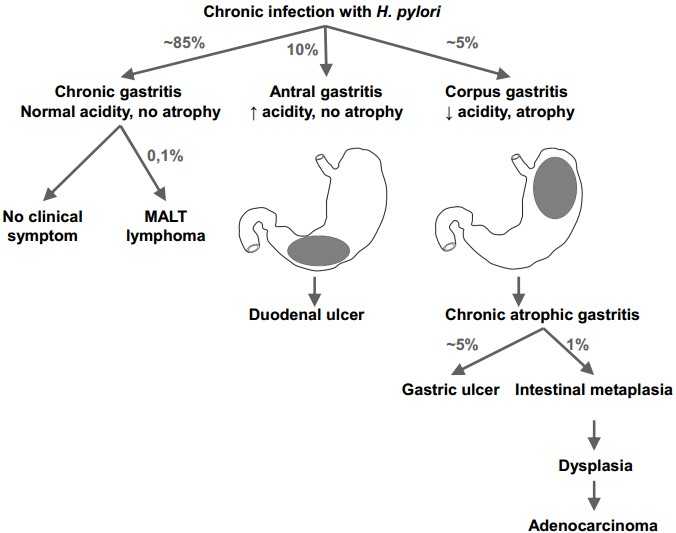Human Helicobacter pylori IgM ELISA kit
Regulatory status: For research use only, not for use in diagnostic procedures.
2.Standard serum (ready-to-use) STD Human serum in phosphate buffer with protein; negative for anti-HIV-Ab, HBs-Ag (Hepatitis B-Virus-surface antigen) and anti-HCV-Ab; preservative: < 0.1 % sodium azide, colouring: Amaranth O, 2 x 2 ml
3.Negative control serum (ready-to-use) NEG Human serum in phosphate buffer with protein; negative for anti-HIV-Ab, HBs-Ag (Hepatitis B-Virus-surface antigen) and anti-HCV; preservative: < 0.1 % sodium azide, colouring: Lissamin green V, 2 ml
4.Anti-human-IgM-conjugate (ready-to-use) APC Anti-human-IgM from goat (polyclonal), conjugated to alkaline phosphatase, stabilized with protein stabilization solution, preservative: 0.01 % methylisothiazolone, 0.01 % bromnitrodioxane, 13 ml
5.Washing solution concentrate (sufficient for 1 litre) WASH Sodium chloride solution with Tween 20, 30 mM Tris, preservative: < 0.1 % sodium azide, 33.3 ml
6.Dilution buffer DILB Phosphate buffer with protein and Tween 20; preservative: < 0.1 % sodium azide 0.01 g/l Bromphenol blue sodium salt, 2 x 50 ml
7.Stopping solution STOP 1.2 N sodium hydroxide, 15 ml
8.Substrate (ready-to-use) pNPP Para-nitrophenylphosphate, solvent free buffer, preservative: < 0.1 % sodium azide, (Substrate in unopened bottle may have a slightly yellow coloring. This does not reduce the quality of the product!), 13 ml
9.Quality control certificate with standard curve and evaluation table INFO (quantification of antibodies in IU/ml or U/ml), 1

| Product Name | Cat. No. | Applications | Host Species | Datasheet | Price | Add to Basket |
|---|
| Product Name | Cat. No. | Applications | Host Species | Datasheet | Price | Add to Basket |
|---|
Helicobacter pylori (Hp) is a common gram-negative bacterium of gastrointestinal infections, mainly found on the surface of gastric epithelial cells and in mucus, and has been associated with gastric ulcers, gastric cancer, and related lymphomas of the gastric mucosa. Its discovery triggered a revolution in the treatment of gastrointestinal diseases, turning the original chronic, difficult-to-cure, recurring peptic ulcers into diseases that can be cured with a short course of antimicrobial drugs, and making a great contribution to the improvement of the quality of life of human beings. In addition to intragastric disorders, there is growing evidence that Hp infection is associated with systemic disorders of the cardiovascular, immune, and nervous systems. Hp infection increases susceptibility to coronary atherosclerotic disease, stroke, and myocardial infarction, and can also cause changes in the metabolic system, leading to glucose disorder in diabetic patients. In neurological disorders, it is associated with Alzheimer's disease and multiple sclerosis. In addition, Hp is associated with liver fibrosis and tumorigenesis. Eradication of Hp improves hematologic disorders, including iron deficiency anemia and primary immune thrombocytopenia.
 Figure 1. Various consequences of Helicobacter pylori infection
Figure 1. Various consequences of Helicobacter pylori infection
(Source: Mégraud F, et al. 2015)
Hp pathogenicity is associated with its flagella, adhesins, and cytotoxins, as well as with cytotoxin-associated gene A (CagA) and vacuole toxin-associated gene (VacA). CagA proteins are the most representative virulence factors that can enter eukaryotic cells through the type IV secretion system and induce changes in cell morphology. Hp attached to gastric mucosal epithelial cells can inject CagA protein into the epithelial cells through the Gram-negative bacterial type IV secretion system, and the phosphorylated CagA protein combined with the eukaryotic phosphatase SHP-2 remodeled the epithelial cell skeleton of the gastric mucosal epithelial cells, which led to the aberrant proliferation and motility of the epithelial cells. VacA protein induces intracellular vacuole-like degeneration and also upregulates the expression of the pro-apoptotic protein Bax and endogenous mitochondrial membrane voltage-dependent anion channels, leading to the release of cytochrome C, which induces apoptosis in host cells.
Omeprazole and amoxicillin were once the classic bactericidal and anti-acid duo with remarkable efficacy. Subsequently, treatment for Hp eradication evolved into triple therapy, mainly bismuth or proton pump inhibitors (PPIs), plus 2 antimicrobials. Examples include combinations of PPIs, amoxicillin and clarithromycin, metronidazole, or levofloxacin. With the widespread use of antimicrobials, Hp developed resistance. With increasing rates of drug resistance, the eradication rate of Hp has declined dramatically, greatly impacting treatment outcomes and posing a therapeutic challenge. The search for new Hp treatments and strategies to reduce antimicrobial drug resistance has become a current research hotspot.
H. pylori IgM ELISA kit
Hp IgM ELISA kit
References
1. Chmiela M, et al. Review: Pathogenesis of Helicobacter pylori infection. Helicobacter. 2019 Sep;24 Suppl 1(Suppl Suppl 1):e12638.
2. Mégraud F, et al. Helicobacter pylori infection and gastric carcinoma. Clin Microbiol Infect. 2015 Nov;21(11):984-90.
- Helicobacter pylori Antigens
- Helicobacter pylori Bacterial Infection
 Infectious Disease Test Kits and Positive Controls
Infectious Disease Test Kits and Positive Controls
Invoice / Purchase Order
Credit card
![]()
![Recombinant H. pylori CagA VacA chimeric protein [His] (DAG-WT1854)](http://img2.creative-diagnostics.com/productimages-1/DAG-WT1854-1.jpg)
![Recombinant H. pylori VacA antigen [His] (DAG-WT407)](http://img2.creative-diagnostics.com/productimages-1/DAG-WT407-1.jpg)